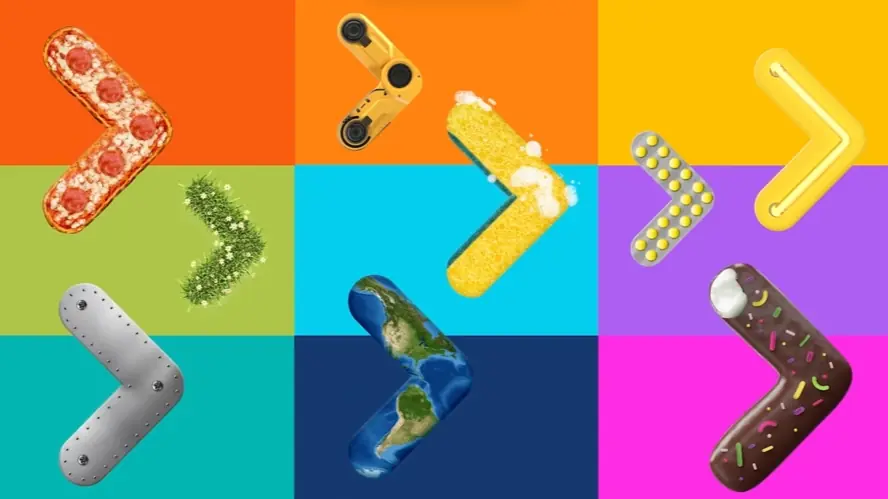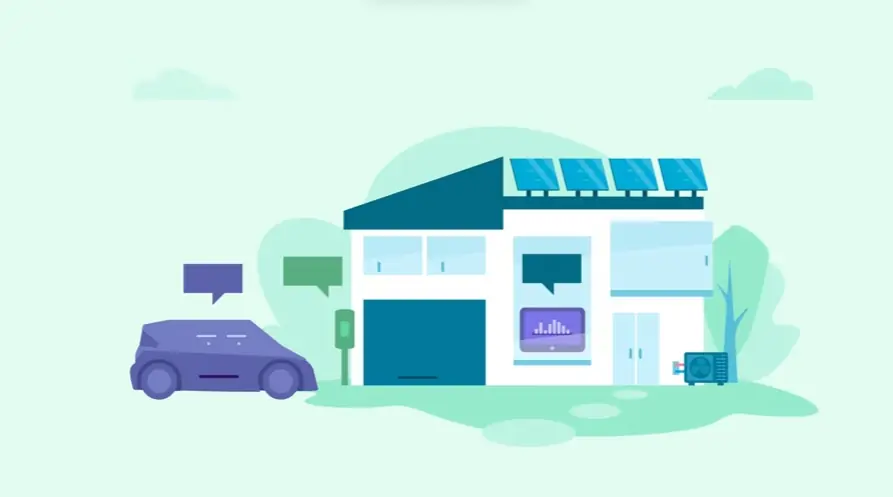
How can 3D animation generate leads?
Animation generates leads by showcasing product features, benefits, and driving conversions through engaging visuals.
What 3D animation styles best suit my brand?
Animation styles range from minimalist to dynamic, adapting to brand messaging and target audience. Examples include:
Minimalist: Clean lines, simple shapes, and muted colors for a sophisticated look.
Dynamic: Fast-paced action, vibrant colors, and complex character animation for high-energy impact.
How do I plan a 3D animated explainer?
Planning an animated explainer involves:
Script Development: Crafting a clear and concise narrative.
Storyboarding: Visualizing key scenes and transitions.
Style Selection: Choosing an aesthetic that aligns with the brand.
Asset Gathering: Compiling necessary resources for production.
What are best practices for 3D animation marketing funnels?
Best practices for animation marketing funnels include tailoring visuals to each stage, from awareness-building content to product demos.
What's the typical 3D animation production timeline?
Typical animation production timelines range from 3-8 weeks, depending on complexity and revisions. Rush projects are possible with adjusted planning.
How can I integrate existing assets into my 3D animation?
Existing assets can be seamlessly integrated into animations, optimizing them for visual consistency and maximizing resource utilization.
What narrative structures are most effective for 3D animated storytelling?
Effective narrative structures for animated storytelling include problem/solution, chronological demonstrations, and emotional journeys, tailored to the specific message.
How do competitors leverage CGI films for marketing?
CGI films are used for marketing to showcase complex products, highlight unique selling points, and build brand affinity through immersive visuals.
What makes a 3D animation successful?
Successful animation combines clear messaging, engaging visuals, and a strong call to action, resonating with the target audience.
What techniques make a 3D animation captivating?
Captivating animation utilizes dynamic camera angles, subtle movements, and strategic lighting to highlight key features and create visual interest.
How can CGI explain a complex service?
CGI explains complex services by visually demonstrating processes, simplifying understanding, and showcasing benefits through engaging narratives.
How can I strategically use 3D animation in marketing?
Strategic animation use in marketing includes product demos, explainer videos, and social media content, boosting engagement and conversions.
Can a 3D product demo boost sales?
3D product demos can boost sales by enhancing product understanding, building buyer confidence, and showcasing functionality in an interactive format.
How can my 3D animation's visual style reflect my brand?
An animation's visual style, including color palettes, character design, and animation techniques, should reflect the brand's identity for consistent brand recognition.
How can character design in 3D animation build emotional connections with my audience?
Character design in animation builds emotional connections by creating relatable personalities that embody brand values and resonate with the target audience. Consider a playful character for a children's product or a sophisticated character for a luxury brand.
Inside the 3D Animation Production Pipeline
Bringing a vision to screen as a 3D Animation Video demands a meticulously structured process, a pipeline transforming concepts into compelling visuals. This journey begins not just with ideas visualized in storyboards, but often refined through animatics, simple animated sequences testing the narrative flow and timing before significant resources are committed. This crucial pre-visualization phase ensures a cohesive blueprint guides the complex work ahead.
From there, the build begins. Artists create geometric forms through modeling, then add intricate surface details using texturing and shaders that define how light interacts with these digital materials. Before movement begins, characters and objects need Rigging, a complex technical step that builds a digital skeleton and control system allowing animators precise manipulation. Strategic lighting is then designed, adding mood, depth, and highlighting key elements within the scene.
Animators breathe life into characters. This can involve detailed manual keyframing or leveraging technology like Motion capture to translate human performance directly to digital forms.
Creating believable facial expressions is a specialized task, often utilizing blend shapes to smoothly transition between different emotional states and mouth movements for dialogue.
Managing the complexity of scenes with countless objects, textures, and light sources presents significant technical challenges, requiring constant optimization of assets like models and textures for performance.
Achieving realistic light and shadow interactions is an ongoing technical and artistic endeavor, with small adjustments dramatically impacting the final visual feel.
Once animated, the scenes undergo Rendering, a computationally demanding step that converts all the models, textures, lighting, and animation data into final image frames. After rendering, these frames enter compositing, where different layers merge, integrating visual effects seamlessly and undergoing final color correction. This detailed pipeline, demanding both artistic skill and technical expertise, ensures every element aligns to deliver the polished final product.
Why Advids for 3D Animation Video?
At Advids, we transform your ideas into captivating 3D animated experiences. With over 12 years of proven success and more than 3400 satisfied clients, we blend creative storytelling, cutting-edge technology, and a collaborative approach to deliver exceptional results.
Experience the Advids Advantage:
Industry Leaders Trust Us: From startups to Fortune 500 companies, brands like Razorpay, Ola, Mercedes, the United Nations, Continental, and Mercer rely on Advids to bring their stories to life through the power of 3D animation.
A Legacy of Success: Our 3400+ completed projects and 109+ five-star Google reviews speak volumes about our dedication to client satisfaction and the quality of our 3D animation work.
Over 270 Successful 3D Animation Projects: We've crafted a diverse range of compelling 3D animation videos, demonstrating our expertise in this dynamic medium.
From Concept to Creation:
Collaborative Partnership: We work closely with you throughout the entire process, ensuring your vision is at the heart of every creative decision.
Customized 3D Animation Solutions: We tailor each project to your specific needs, whether you require explainer videos, character animations, or other 3D animation styles.
Strategic Communication: We prioritize clear and open communication to fully understand your brand, target audience, and objectives.
The Power of 3D Animation:
Creative Storytelling Through Animation: Our skilled team of animators and storytellers craft narratives that resonate with your audience and drive meaningful engagement.
Cutting-Edge 3D Animation Technology: We utilize the latest software and techniques to create visually stunning and impactful 3D animations.
Ready to unlock the potential of 3D Animation Video for your business with the latest video design trends of 2024? Let Advids be your trusted partner in transforming your ideas into engaging and effective animated experiences.
Checkout some of the projects and work our team at Advids has been producing:
What is a 3D Animation Video?
A 3D animation video is a type of video that uses computer-generated imagery (CGI) to create realistic and engaging visuals. This technique involves creating 3D models of objects, characters, and environments, then animating them to tell a story, explain a concept, or showcase a product.
3D animation videos are used for a wide range of purposes, including marketing, education, entertainment, and scientific visualization. They can be used to create product demos, explainer videos, animated commercials, educational tutorials, and even feature-length films.
What do top 3D Animation Videos have in common?
Mastering these key elements ensures your 3D animation video captivates and leaves a lasting impression.
Compelling Narrative - craft a story with relatable characters and high stakes to resonate deeply.
- Character Design - Develop distinct character designs that convey personality and emotion instantly.
- World-Building - Create a believable world with consistent details to immerse the viewer fully.
- Animation Quality - Use advanced techniques like motion blur and secondary animation for fluidity.
- Visual Composition - Employ the rule of thirds, leading lines, and depth of field for visual impact.
- Lighting and Shading - Use three-point lighting and realistic shadowing to create depth and mood.
- Texturing and Detailing - Utilize high-resolution textures and intricate details for realism.
- Rigging and Performance - Employ advanced rigging techniques for natural and expressive character movement.
- Camera Movement and Pacing - Use dynamic camera angles and strategic pacing to build suspense and emotion.
- Visual Effects (VFX) - Integrate VFX seamlessly to enhance the visuals without distracting from the story.
What makes 3D Animation Video effective?
Develop compelling narratives, even for inanimate objects, by imbuing them with relatable characteristics and clear goals. Prioritize high-fidelity 3D models featuring realistic textures, meticulously detailed modeling, and optimized polygon counts for seamless rendering and performance. Employ advanced animation techniques to ensure fluid, believable movement, eliminating any jarring transitions or unnatural poses. Masterful lighting design sets the mood, strategically highlights key elements, and creates depth and realism, enhancing the overall visual impact.
Craft memorable and relatable characters, even abstract ones, to foster emotional engagement and audience connection. Employ strategic shot composition, utilizing dynamic camera movements and varied angles to precisely control pacing and viewer attention. Develop a strategic color palette to evoke specific emotions, reinforce brand identity, and maximize visual appeal. Masterfully control the animations pacing, using slow motion for emphasis and quick cuts for action, to maintain viewer engagement.
Thorough pre-visualization, including storyboarding and animatics, is crucial for ensuring a cohesive and impactful final product. This allows for iterative refinement before full production begins. The success of a 3D animation video relies on a holistic approach, meticulously integrating all these elements to create a cohesive and impactful viewing experience.
How long should your 3D Animation Video be?
Mastering 3D animation video length hinges on aligning video type, target audience, and marketing goals for optimal impact.
Pre-production Considerations for Determining Video Length:
- What's the video's core message?
- Who is the intended viewer?
- How many key features need showcasing?
- What style best suits the product?
- Which platform will host the video?
- Does the style align with the brand?
- What's the desired viewer engagement?
3D animation video length guide
| 3D Animation Types | Video Length | Use Case | Funnel |
|---|
| Cartoon Style | 30-60 seconds | Explainer video for children's products, focusing on bright colors and simple storytelling, using a whimsical approach. | Awareness |
| Realistic Style | 45-90 seconds | Showcase high-end products or architectural designs, emphasizing detail and realism, using photorealistic rendering. | Consideration |
| CGI Animation | 1-2 minutes | Demonstrate complex processes or technologies, ideal for software or industrial applications, using dynamic camera movements. | Conversion |
| Motion Graphics | 15-30 seconds | Create short, engaging ads or social media content, highlighting key features with minimal text, using a clean and modern style. | Awareness |
| Stylized Realism | 45-75 seconds | Promote a brand or product with a unique artistic flair, blending realism with stylized elements, using a blend of realistic and painterly styles. | Consideration |
How to create 3D Animation Videos?
Crafting compelling 3d animation videos requires a strategic approach, focusing on clear communication and impactful visuals to effectively showcase your product or service.,,
* Concept Definition - A strong concept ensures a focused and impactful video. Successful videos start with a clear vision.- Storyboarding - Detailed storyboards prevent costly revisions and ensure a cohesive narrative. Visualizing the flow is key.
- Audience Research - Tailoring the message to the audience maximizes engagement and comprehension. Know your viewer.
- Scriptwriting - A well-crafted script ensures clarity and keeps the viewer engaged. Strong writing is paramount.
- Style Selection - The right style enhances brand identity and creates a memorable experience. Visual style matters.
- 3D Modeling - High-quality models create a professional and believable representation of the UI. Detail is crucial.
- Rigging - Efficient rigging allows for smooth and natural animation, enhancing the user experience. Smoothness is key.
- Animation - Fluid and intuitive animations showcase the UI's functionality effectively. Clear and concise is best.
- Lighting/Texturing - Strategic lighting and textures add depth and realism, making the UI more appealing. Enhance realism.
- Final Rendering - High-resolution rendering ensures a polished final product that is visually stunning. Quality is paramount.
The Importance of a Detailed Brief
Crafting a compelling 3D animation starts with a detailed brief. It's our roadmap, ensuring we're all aligned on the vision and goals. A well-crafted brief saves time, resources, and prevents misunderstandings down the line. Let's explore the essentials:
A strong brief bridges the gap between your creative vision and the final product. It's the foundation upon which a successful animation is built. Think of it as a conversation starter, a document that fosters collaboration and clarity.
- Objectives: What's the video's purpose? Is it to boost sales, explain a complex process, or build brand awareness? Defining this early sets the direction for the entire project.
- Target Audience: Who are we talking to? Knowing our audience informs every decision, from style to music. Are we targeting tech enthusiasts with 3D animation video examples for technology or a younger demographic with a cartoon style?
- Style and Inspiration: What look and feel are we aiming for? Sharing examples, like 3D motion graphics examples or 3D animation video showcases, helps convey our vision. Looking at 3D animation video portfolio examples can also spark creative ideas.
- Key Details: Outline the core message, desired length, technical specifications, and any specific UI/UX considerations. This ensures the final product aligns with our initial vision.
A comprehensive brief sets the stage for a smooth and successful animation project. It empowers our creative team to bring our vision to life, ensuring a final product that meets our objectives and captivates our audience.
The 3D Animation Production Process
Building on our foundation, let's explore the journey of bringing a 3D animation to life. It's a collaborative process, blending technical expertise with creative vision. From initial sparks of inspiration to the final polished product, each stage plays a vital role. Think of it as building a house – a strong foundation leads to a stunning result.
We start with a solid blueprint. This involves refining the initial concept, crafting a compelling script, and visualizing the narrative through detailed storyboards. Just like choosing the right architectural style, selecting the appropriate visual style for the animation is crucial. Looking at the best 3D animation video examples can provide valuable inspiration.
Next, we move into the construction phase. This is where our skilled artists create the digital assets, from 3D modeling and texturing to rigging and animation. We breathe life into characters and environments, adding intricate details and ensuring smooth, natural movements. Much like adding lighting fixtures to a house, strategic lighting in animation enhances the mood and brings the scene to life.
Finally, we add the finishing touches. High-quality rendering produces stunning visuals, while compositing and VFX enhance the storytelling. Sound design and music create an immersive experience, and careful editing polishes the final product. Throughout this process, we maintain a focus on delivering high-quality 3D animation that meets your specific marketing objectives. Consider 3D animation video examples for marketing to see how different styles achieve specific goals.
- Pre-Visualization: We refine the initial concept, ensuring it aligns with your brand and message.
- Production: Our talented artists bring your vision to life through 3D modeling, texturing, rigging, and animation. Adding 3D visual effects examples can elevate the visual storytelling.
- Post-Production: We enhance the visuals with lighting, rendering, compositing, and VFX. Sound design and music complete the immersive experience.
- Delivery: We provide the final video in the optimal format for your chosen platform.
From the initial spark of an idea to the final polished product, we work collaboratively with you to ensure your 3D animation captivates your audience and achieves your marketing goals.
Choosing the Right 3D Animation Style
Choosing the right 3D animation style is crucial for bringing your vision to life. Let's explore the key factors that will guide us in making the perfect choice. We'll consider our target audience, brand personality, and the overall message we want to convey. Think about the feeling you want your video to evoke. Is it excitement, trust, or perhaps a sense of wonder?
Understanding your audience is paramount. A cartoon style might be perfect for a children's product, while a realistic style could be ideal for showcasing high-end architecture. For software demos, consider 3D animation video examples for software that showcase user interfaces and functionality with clarity. Similarly, in e-learning, 3D animation video examples for e-learning can bring complex concepts to life.
Practical considerations like budget and timeline also play a role. While a highly realistic CGI animation can be stunning, it might require more resources and time than a stylized approach. We need to balance our creative vision with practical constraints.
- Consider the complexity of your message. animated explainer videos 3D are perfect for simplifying intricate ideas. For product launches, 3D animation video demos offer a compelling and interactive experience.
- Think about the platform where your video will be hosted. A short, dynamic style might be ideal for social media, while a longer, more detailed style might suit a website or presentation.
- Explore different styles. From the whimsical charm of cartoon animation to the photorealistic detail of CGI, the possibilities are endless.
- Don't be afraid to experiment and find a style that truly represents your brand and captivates your audience.
Ready to dive deeper into the world of 3D animation styles? Let's explore some inspiring examples and discover the perfect fit for your next project.
Reviewing 3D Animation Proposals
So, we've covered the basics of 3D animation. Now, how do we evaluate proposals and choose the right partner? A winning proposal demonstrates a deep understanding of your vision. It's not just about technical skills; it's about capturing the essence of your brand.
What should we look for in a winning proposal? It's about more than just pretty pictures. It's about finding a partner who understands your goals and can bring your vision to life.
- Concept and Narrative: Does the story resonate with your target audience? Is it clear, concise, and engaging? For explainer videos, 3D animation video examples for explainer videos can be a great source of inspiration.
- Style and Execution: Does the proposed style align with your brand identity? Does it evoke the right emotions? Looking at 3D animation video examples for advertising can help you visualize different styles.
- Technical Expertise: Does the studio have a proven track record? Do their 3D animation case studies demonstrate the skills and experience needed for your project?
- Collaboration and Communication: Does the proposal outline a clear process for feedback and revisions? Open communication is key to a successful partnership.
A strong proposal is a roadmap to a successful 3D animation. It's a collaborative document that sets the stage for a fruitful partnership. By carefully evaluating these elements, we can choose a partner who will bring our vision to life and create a video that captivates our audience.
Author & Editor Bio
A video producer with a passion for creating compelling video narratives, Jai Ghosh brings a wealth of experience to his role. His background in Digital Journalism and over 11 years of freelance media consulting inform his approach to video production. For the past 7 years, he has been a vital part of the Advids team, honing his expertise in video content planning, creation, and strategy.
His collaborative approach ensures that he works closely with clients, from startups to enterprises, to understand their communication goals and deliver impactful video solutions. He thrives on transforming ideas into engaging videos, whether it's a product demo, an educational explainer, or a brand story.
An avid reader of modern marketing literature, he keeps his knowledge current. Among his favorite reads from 2024 are "Balls Out Marketing" by Peter Roesler, "Give to Grow" by Mo Bunnell and "For the Culture" by Marcus Collins. His results-driven approach ensures that video content resonates with audiences and helps businesses flourish.




